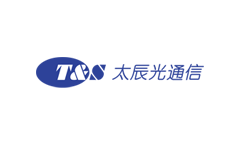What are the Categories of QSFP+ AOC?

Aactive optical cable (AOC) has many advantages such as high transmission rate, long transmission distance, low energy consumption, and convenient use. It can replace passive optical cables or copper wire-based cable systems to be applied in high-density and high-bandwidth situations and has become the ideal transmission cables for data centers, consumer electronics and other fields.
However, active optical cables can be classified into various types according to different specifications and speeds, such as 200G QSFP-DD AOC, 100G/50G QSFP28 AOC, 56G/40G QSFP AOC, SFP28 AOC, and so on. So, what are their characteristics and what are their categories? This article will give a detailed introduction to QSFP+ AOC and its categories.
1. What is QSFP+ AOC?
QSFP+ AOC is an efficient integrated cable assembly product designed for short-distance multi-channel data communication and interconnection applications. Its communication distance ranges from 1 to 100 meters and it is suitable for supercomputers and SDR, DDR, QDR and other applications based on InfiniBand standards. Moreover, active optical cables have more significant advantages over interconnected copper cables, such as lower transmission power on system links, only one-fourth of the weight of direct-connected copper cables, slightly half the volume of copper cables, better air flow and heat dissipation in the cabling system of the computer room, smaller bending radius, longer transmission distance, and lower bit error rate of the product transmission performance.
2. What are the categories of QSFP+ AOC?
(1) 56G QSFP+ AOC
56G QSFP+ AOC: QSFP+ FDR active optical cable has a built-in 850nm VCSEL laser, PIN array, integrated driver and receiver chip. It supports the standards including InfiniBand FDR, 10G Ethernet, SAS2.0 and SAS3.0, 8G and 10G fibre channel. The transmission distance of OM3 optical fiber is 100 meters, and that of OM4 optical fiber is 150 meters. It is 100% perfectly compatible with a full range of brand servers, switches, routers, PDH/SDH transmission equipment, EPON, GPON, 10G EPON, 10G GPON and WDM PON base stations.
Its product features are as follows:
Full-duplex 4-channel 850nm active optical cable; transmission data rate of 14.0625gbit/s/channel; set trigger SFF-8436 QSFP+ compatible; hot-swappable electrical interface; 4-channel 850nm VCSEL array; 4-channel PIN photodetector array; OM3 multimode fiber (MMF) with a maximum link length of 100m and OM4 MMF of 150 meters; low-power shell and connector; 0°C + 70°C working temperature; 3.3 V power supply voltage; RoHS6.
(2) 40G QSFP+ to 4X10G SFP+ AOC
40GQSFP+ to 4X10G SFP+ AOC provides IT professionals with cost-effective host adapters, switches, and servers enabled by combining 40G QSFP and 10G SFP+.
For typical applications, users can install this breakout active optical cable between the QSFP ports on their 40Gbps rated switches and provide four upstream 10 gb/s-sfp+ enabled switches.
Each QSFP-SFP+ split active optical cable is characterized by a QSFP connector (sff-8436) at one end and SFP+ connector (SFF-8431), which are rated 40Gbps (SFF-8436), which is 10gb/s respectively.
The product features are as follows:
The electrical interface is compatible with QSFP+ connector (setting trigger-8436) and SFP+ connector (setting trigger-8431); hot pluggable; 850nm VCSEL transmitter, PIN laser detector; OM3 MMF up to 100m; operating temperature: 0-70℃; excellent EMI performance of all metal shell; RoHS6 (lead-free).
(3) 40G QSFP+ AOC
40G QSFP+AOC is the core component to realize parallel optical interconnection. It consists of ribbon fiber jumpers connected to two high-speed 40G parallel connectors. Each signal direction has 4 data channels, and each channel can work at the speed of 10Gbps. Its transmission distance is generally 1 to 100m.
Advantages of 40G QSFP+ AOC:
Compared with traditional 40G copper cables, 40G active optical cables have incomparable advantages: high transmission efficiency, small size, light weight, and low energy consumption;
Compared with the optical transceiver, the AOC has no cleaning problem when the connector fails, and there is no need to test the terminal plug, which can help users save more time;
AOC QSFP has better cabling consistency and repeatability. The closed ends are easier to avoid the influence of environment and vibration. If there is a failure, it can be replaced directly, saving costs;
AOC is generally cheaper than optical transceivers. It can save deployment costs, and the transmission distance can also meet the requirements of a variety of short-distance transmission applications.
- +1 Like
- Add to Favorites
Recommend
- How Is 25G AOC Active Optical Cable?
- Sekorm Reached a Cooperation with the top Cable manufacturer LEONI to Expand the Cable and Optical Fiber Business
- Comparison between AOC (Active Optical Cables) and Optical Transceivers
- What Is the Difference between 100G Active Optical Cable and 100G Direct Attach Cable?
- Why Use Active Optical Cable?
- Comparison of Advantages and Disadvantages Between 40G QSFP+SR4 Optical Module and QSFP+ AOC Active Optical Cable
- What Factors ShouldWhat Factors Should Be Considered in Choosing a Cost-effective Active Optical Cable?
- What Are the Advantages of Direct Attach Cable Over Active Optical Cable?
This document is provided by Sekorm Platform for VIP exclusive service. The copyright is owned by Sekorm. Without authorization, any medias, websites or individual are not allowed to reprint. When authorizing the reprint, the link of www.sekorm.com must be indicated.





























































































































































































































































































































































































































































































































































































































































































































































































































































































